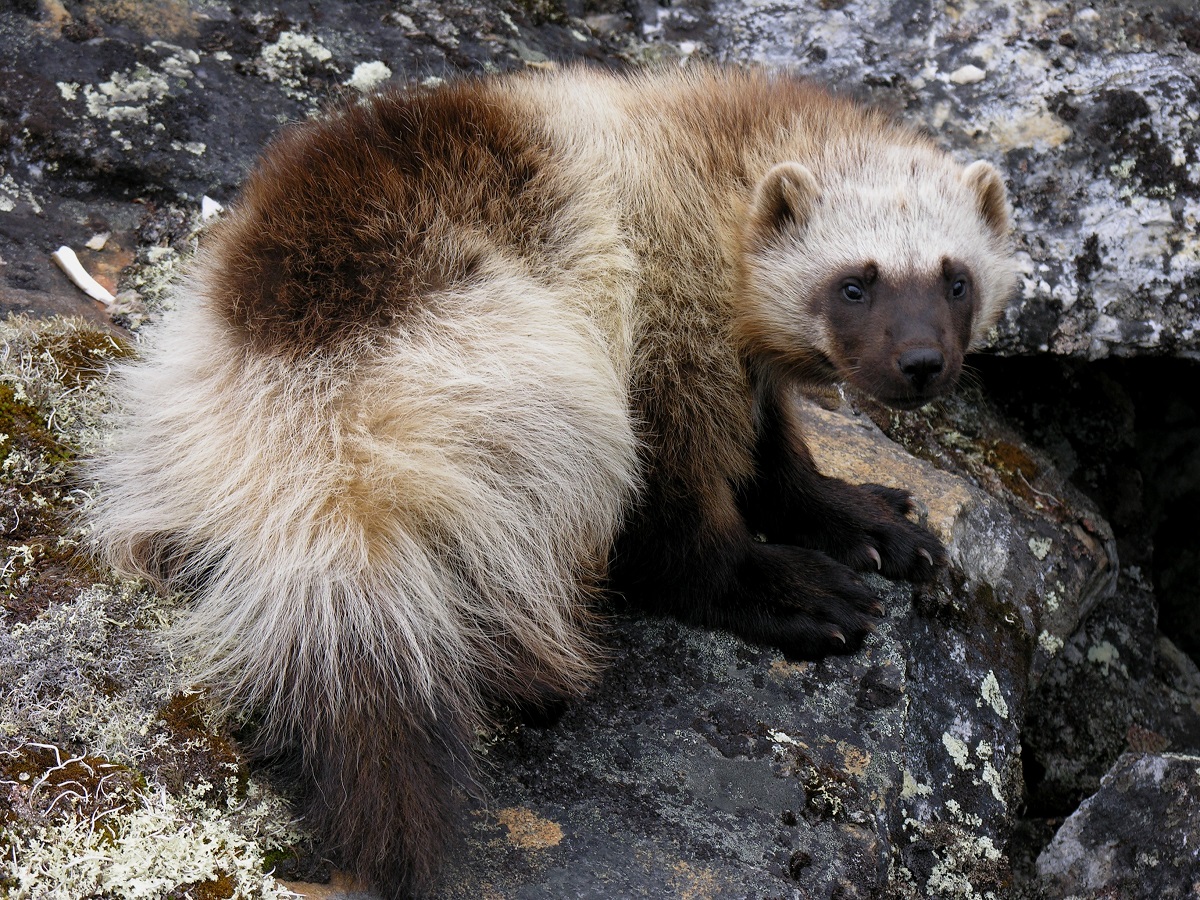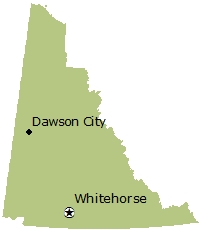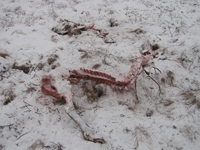
Name
- Common name: Wolverine
- Scientific name: Gulo gulo
- Order: Carnivora
- Family: Mustelidae
Also known as
Skunk Bear, Glutton
Viewing opportunities
- Wolverine are one of the most reclusive animals of the boreal forest. In winter, visiting kill sites from hunters or wolves may result in a sighting.
- In summer, look for Wolverines in the sub-alpine and alpine areas, where food sources such as ground squirrel or marmot colonies are found.
Description
- Stocky and muscular body-resembling a small bear.
- Dark fur with a blonde stripe running down both sides of the body.
- Bushy tail, short legs.
Fast Facts
- Length: 1 m
- Weight: 12 kg
- Lifespan: 6 to 13 years
- Predators: Wolves and bears
- Habitat: Boreal Forest, Mountain Alpine, Arctic Tundra
Conservation status
- Yukon: S3 (Vulnerable)
- Global: G4 (Apparently Secure)
Yukon population estimate
Not determined.
Behaviour
Wolverines are solitary carnivores that occupy home ranges that span hundreds of square kilometres. Wolverines are opportunistic in their feeding habits and will eat almost anything. They are mostly known as scavengers of carrion, such as moose or caribou killed by other predators. Carrion forms a large component of their diet, in addition to hunting small prey, such as Snowshoe Hare. Female Wolverines give birth to kits during late winter, earlier than other northern carnivores. A Wolverine den is typically a tunnel dug into deep snow in alpine and subalpine areas, where snow lingers until late spring.
Diet
Small to mid-size mammals. They will often scavenge kills of moose, caribou and sheep.
Distribution

Sights and sounds

Wolverine track, front: 6.3 x 7.5 cm.

Wolverine track, hind: 7.5 x 9 cm.

Kill that has been scavenged.
Wolverines and people
- Wolverine pelts are highly valued because of their frost resistant properties.
- Wolverine is the icon of remote wilderness, because of their elusive nature and requirement for large home ranges.
Reports
- Wolverine (Gulo gulo) harvest in the Yukon (2015-2021)
- Wolverine Carcass Collection Project: 2013-2014 Annual Report (2016)
- Wolverine Carcass Collection Project: 2013 Progress Report (2013)